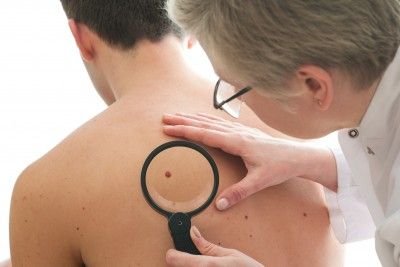 New Health Guide
New Health Guide
By the time you reach the age of 30, you will have probably 10-40 moles on your skin. These black or brown skin growths begin to appear differently after a period of time, either become raised or adapt a different color. They may also begin to grow hair. You may have moles that don’t change in any way; some may even just fade away.
While most moles are nothing serious, there is always a chance that this skin growth could turn into a form of skin cancer. Chances are it will remain the same, but just make sure you keep checking the status of your skin so that you can have it checked out if it shows any of the following signs:
 The size and symmetry of the mole. Keep an eye on any moles that seem to be growing or no longer look symmetrical - both sides of the mole should look the same.
The size and symmetry of the mole. Keep an eye on any moles that seem to be growing or no longer look symmetrical - both sides of the mole should look the same.Most moles are regular and will remain that way, while atypical moles have a tendency to become cancerous.If you find a larger mole that is around 5-12 millimeters and it has a variety of colors to it, this would be considered an atypical mole. They could appear to be tan colored, pink, black or dark brown. The surrounding area is usually very irregular and not smooth and distinct. These types of moles seem to be more prevalent on people who spend a good deal of time in the sun but they are not limited to sun worshippers.
If your mole does happen to exhibit any of these signs, prompt treatment is of the utmost importance. If it is determined that your mole has the beginning stages of cancer, it is easier to take care of if treated right away. The treatment is removal while under a local anesthesia. The longer that you wait to see a doctor, the more challenging it will be to rectify.
 If you are trying to decide when to worry about a mole, it may be hard for you to decipher. Determining if your mole is potentially cancerous can be made a little simpler with the “ABCD” rule.
If you are trying to decide when to worry about a mole, it may be hard for you to decipher. Determining if your mole is potentially cancerous can be made a little simpler with the “ABCD” rule.
The American Cancer Society (ACS) suggests using the first four letters of the alphabet to remind you of what to look for in a dangerous mole.
For a clearer view of when to worry about a mole, you may watch the video below:
If you find that your mole has any of the signs that make it possibly dangerous, make an appointment with your physician. Removing the mole is a simple process that consists of numbing the area then cutting it or shaving it off. It’s possible that you may need a stitch or two to close up the area. Your physician will then send a sample of the tissue from the mole to the lab to determine if it was cancerous.